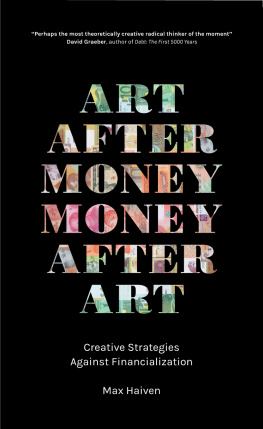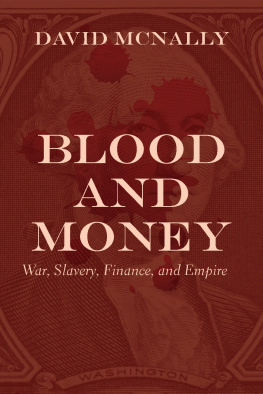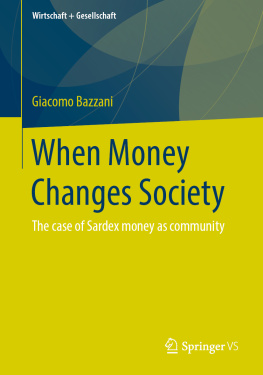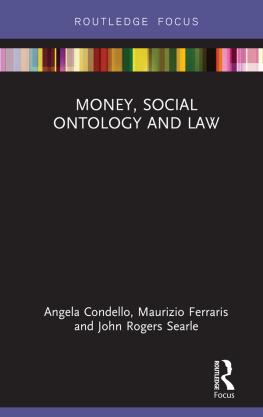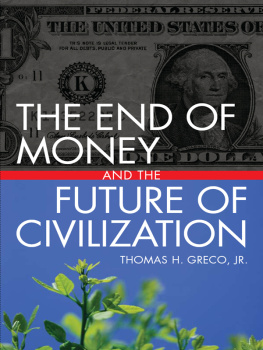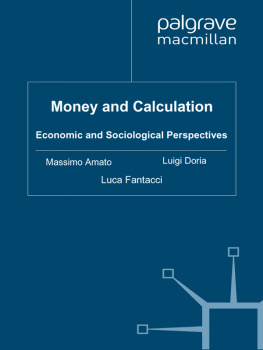M ONEY C OUNTS
Studies in Social Analysis
General Editor: Martin Holbraad
University College London
Focusing on analysis as a meeting ground of the empirical and the conceptual, this series provides a platform for exploring anthropological approaches to social analysis while seeking to open new avenues of communication between anthropology and the humanities, as well as other social sciences.
Volume 1
Being Godless: Ethnographies of Atheism and Non-Religion
Edited by Ruy Llera Blanes and Galina Oustinova-Stjepanovic
Volume 2
Emptiness and Fullness: Ethnographies of Lack and Desire in Contemporary China
Edited by Susanne Bregnbk and Mikkel Bunkenborg
Volume 3
Straying from the Straight Path: How Senses of Failure Invigorate Lived Religion
Edited by David Kloos and Daan Beekers
Volume 4
Stategraphy: Toward a Relational Anthropology of the State
Edited by Tatjana Thelen, Larissa Vetters, and Keebet von Benda-Beckmann
Volume 5
Affective States: Entanglements, Suspensions, Suspicions
Edited by Mateusz Laszczkowski and Madeleine Reeves
Volume 6
Animism beyond the Soul: Ontology, Reflexivity, and the Making of Anthropological Knowledge
Edited by Katherine Swancutt and Mireille Mazard
Volume 7
Hierarchy and Value: Comparative Perspectives on Moral Order
Edited by Jason Hickel and Naomi Haynes Afterword by David Graeber
Volume 8
Post-Ottoman Topologies: The Presence of the Past in the Era of the Nation-State
Edited by Nicolas Argenti
Volume 9
Multiple Nature-Cultures, Diverse Anthropologies
Edited by Casper Bruun Jensen and Atsuro Morita
Volume 10
Money Counts: Revisiting Economic Calculation
Edited by Mario Schmidt and Sandy Ross
M ONEY C OUNTS
Revisiting Economic Calculation
Edited by
Mario Schmidt and Sandy Ross
First published in 2020 by
Berghahn Books
www.berghahnbooks.com
2020 Berghahn Books
Originally published as a special issue of Social Analysis, volume 61, issue 4.
All rights reserved.
Except for the quotation of short passages for the purposes of criticism and review, no part of this book may be reproduced in any form or by any means, electronic or mechanical, including photocopying, recording, or any information storage and retrieval system now known or to be invented, without written permission of the publisher.
Library of Congress Cataloging-in-Publication Data
Library of Congress Control Number: 2019048212
British Library Cataloguing in Publication Data
A catalogue record for this book is available from the British Library.
ISBN 978-1-78920-684-5 (hardback)
ISBN 978-1-78920-685-2 (paperback)
ISBN 978-1-78920-686-9 (ebook)
C ONTENTS
Peter Oakley
Anna Echterhlter
Sandy Ross
Mario Schmidt
Martin Holbraad
Martin Fotta
Emanuel Seitz
Nigel Dodd
I NTRODUCTION
The Quality of Quantity: Monetary Amounts and Their Materialities
Sandy Ross, Mario Schmidt, and Ville Koskinen
Anthropologists rarely portray themselves as quantitative specialists or people who know about numbers. Instead, the adjective qualitative plays a central role in our self-conception. We do qualitative fieldwork; we record and transcribe qualitative interviews; we are skeptical of quantifying methodsespecially those of economistswhich many anthropologists believe fall short of portraying rich lived worlds. In economic anthropology, this haste to distance ourselves from the disciplinary taboothat-which-is-quantitativehas generated a division of labor wherein economists mathematically explore moneys quantitative, abstract potential while anthropologists analyze moneys qualitative aspects (Dupuy 2009; Peebles 2002). This situation neatly reproduces an economy-society binary that economic anthropologists and sociologists have struggled to overcome since the ostensible end of the formalist-substantivist debate (Hann and Hart 2011: 7299). By avoiding quantitative methods and analyses, economic anthropology has largely abandoned the study of moneys quantity and numbers.
Different monies, despite having a diverse range of forms, shapes, and materialscoins, bank notes, stones, shells, and so on (Einzig 1951)have often been The baby, moneys quantity, has been thrown out with the bath water, moneys abstracting potential.
However, the social sciences as a whole are in the midst of a quantitative turn. In contemporary economic anthropology, quantitiesand to a lesser extent numbersare associated with algorithmic trading and high finance; macro-economic phenomena, such as global crises and economic policies; and the ontology and epistemology of homo oeconomicus. Reinvigorated interest in quantitative approaches is largely focused on increasingly complex models and techniques for analyzing colossal data sets, but we believe that thinking about quantitativeness predominantly in terms of Big Data is a failure of imagination. We take inspiration from anthropologists (Almeida 1990; Ascher 2002; Boellstorff and Maurer 2015; Eglash 1997; Guyer et al. 2010; Mitchell 1980; Mosko and Damon 2005; Passes 2006; Peebles 2012; Saxe 2012; Urton and Llanos 1997), philosophers (Badiou 2008; Bateson 1979; Hacking 2014; Rotman 1993), science historians (Verran 2001), and sociologists (Day et al. 2014; Espeland and Sauder 2007; Gerlitz and Lury 2014) who have begun to explore the theoretical boundaries of this emerging quantitative turn. This edited volume argues that economic anthropology has a stake in the new quantitative frontier, not only through the study of high finance or quantitative methods with large data sets, but also through studies of diverse ethnographic and historical conceptualizations of moneys qualitative quantities.
Chapters in this collection build upon recent emphasis on quantity as a central aspect of money (Akin and Robbins 1999; Guyer 2004; Holbraad 2005; Maurer 2008; Pickles 2013), rather than as a side effect of its use as a measure of value and medium of exchange. These contributions focus on exchanges that involve breaking down, calculating, dividing, and recombining sums of moneyreconfiguring quantitative and physical heapsto make new quantities that are qualitatively different. Rather than seeing money as a measuring stick, this book explores how money is used to make and symbolize quantities in different cultural contexts, and how such quantities can be qualitatively different and multiple. Peter Oakleys chapter presents historical and contemporary evidence of gold jewelry as a form of para-money, a substance whose material quantificationvalue by weightcould be easily assessed but artfully concealed in the form of the jewelry itself. The paradox of the money chain is its ambiguous status as a gift defined through its quantitative (weight) and material (purity) equivalences with money that might remain invisible for some actors. In other words, different monetary objects bring forth different practices that can prevent the achievement of or bring forth new forms of quantification. Anna Echterhlters chapter, for example, connects quantities and sensual experience: sounds, feats of strength, or seasonal changes. In her analysis of Frisian tax payments, as recounted by Jacob Grimm, she shows that these tax payments were assessed by the intensity and volume of sounds. Payments were adequate only if the collector, 12 rooms away, could hear coins sounding as they fell onto a shield. From Martin Fottas chapter about contemporary Brazilian Gypsy mens monies, which become carefully quantified and ranked measures of masculinity, to Martin Holbraads chapter about the two-tiered money economy in Cuba, which influences experiences of need and states of poverty, contributors to this volume are thinking ethnographically about how moneys quantities are entangled with its qualities and physical forms.


